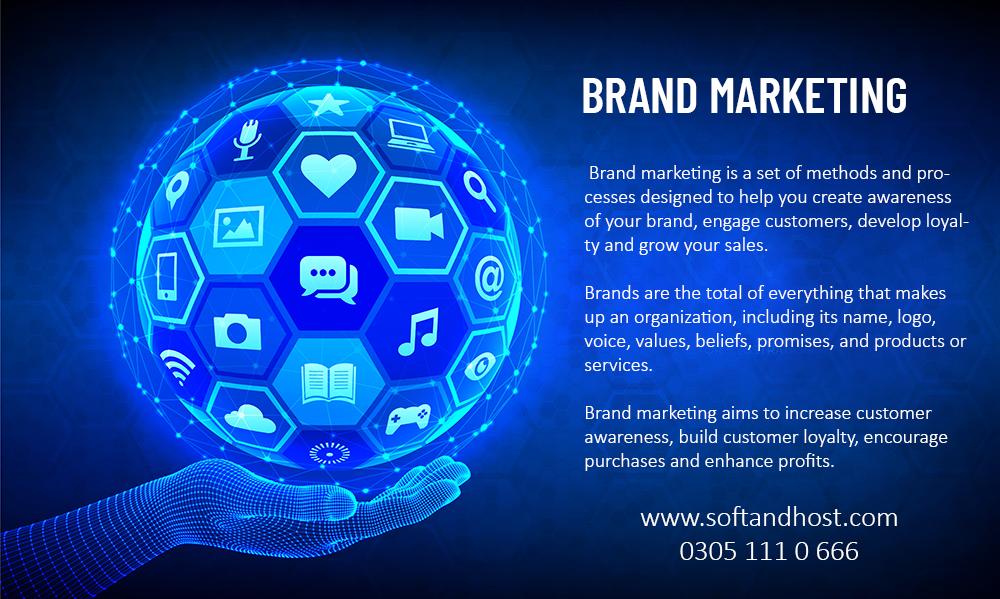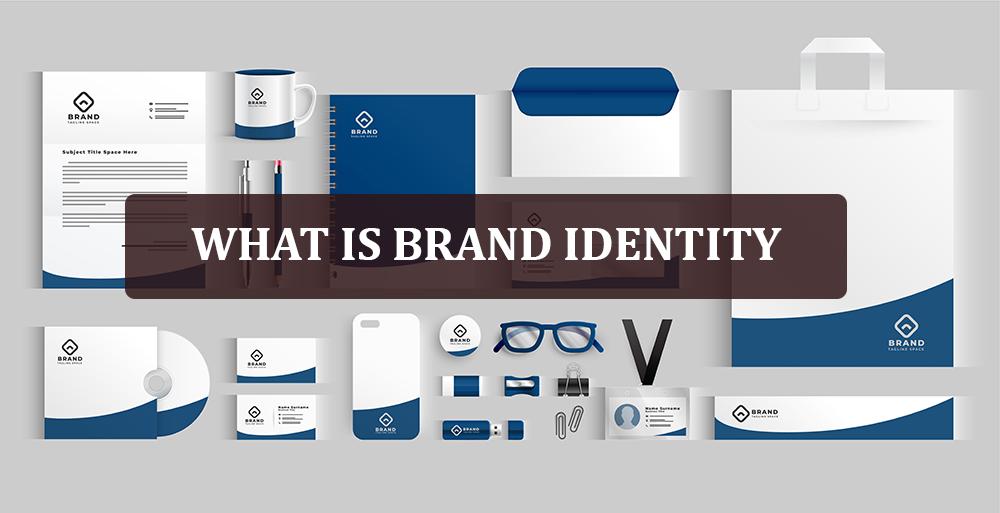The Ultimate Guide to Create a Brand Identity in 2023
It’s important to build your own brand identity. A strong brand is a powerful tool to help you create and build on your unique personality and voice. In an age when brand identity is increasingly important, knowing how to create a brand identity can help you stand out in the crowd.
What is Brand Identity
So what is brand identity anyway? Let’s first discuss what it’s not. Your brand is not your logo. Your brand is your mission statement, your vision, and the overall direction you are heading in as a business. It’s the essence of your company. It’s what makes you unique.
Brands are becoming more and more important to us in the digital age, and while many people understand that the purpose of branding is to sell products or services, it’s also a lot more than that. Branding is a concept that can be applied to almost any endeavor, and not all companies have a brand identity that represents their mission. Some companies struggle to figure out what they want to be when they grow up. As you build your company’s brand identity, you’ll learn how to develop your unique selling proposition, define your core values, and create a compelling brand voice.

BRAND IDENTITY
How to make a successful brand
To have a successful brand, you need to define a consistent visual identity that appeals to your target audience. When customers see your logo and brand image everywhere they turn, they’ll associate your brand with positive feelings. By doing this, you’ll be able to build stronger connections with your audience, which will ultimately lead to more sales. But more is needed to have a logo or design. It would help if you also had a brand personality that represents your business’s essence. And you need to be able to apply that personality across all marketing channels to help your brand become part of people’s daily lives.
What is Brand Marketing
According to HubSpot, brand marketing is the art of building and maintaining a brand’s identity, reputation, and value. It involves a lot of different things, but the main goal is to establish your company’s brand as a leader in your industry.
Brand marketing is a catch-all term used to describe a company’s strategy around its brand and its value to consumers. These strategies can be as simple as designing a company’s logo but can also include everything from how a company talks about itself to what products they offer customers. Brand marketing includes a range of techniques, from advertising and public relations to word-of-mouth marketing.
- Brand marketing is a set of methods and processes designed to help you create awareness of your brand, engage customers, develop loyalty and grow your sales.
- Brands are the total of everything that makes up an organization, including its name, logo, voice, values, beliefs, promises, and products or services.
- Brand marketing aims to increase customer awareness, build customer loyalty, encourage purchases and enhance profits.

brand marketing
Why is Brand Development Important?
When you hear the brand, marketing, and advertising, the last thing you may think of is development. However, building and strengthening a company brand is just as important as the actual marketing campaign itself.
Brand development can be seen as a process that happens throughout a brand’s life. Whether it’s a brand you’re building from scratch or one that you’re trying to improve upon, brand development is the process of bringing your brand’s promise, vision, values, and goals to life. Brand development aims to build a brand that is authentic, clear, consistent, memorable, and valuable.
How to make a brand identity?
So you’re ready to get started on creating your first brand identity. But before you start, take a moment to think about the words or images that describe you as a brand. You should be able to answer questions like these: Who am I? What am I known for? What does my ideal client look like? Who does my competitors target? What makes me different from my competitors? Where do I come from? Where do I live? How big is my company? How long have I been in business?
1. Define the Purpose of Your Business
Your mission, vision, and values define the purpose of your business. While each term can mean different things to different people, they’re generally all connected. The mission is what your business does, the vision is how it should do it, and values reflect how you treat your customers, employees, suppliers, and others in the business world.
Think about who you’re creating this business for and why. It’s okay to have multiple purposes for your business—that’s the beauty of entrepreneurship—but if you can’t define them clearly for your audience, they’ll never understand your motivations. Your purpose is critical for two reasons:
Check Post: Wooden Door Designs
2. Choose a Logo and Mascot
A strong, memorable logo is essential in the early stages of any company. It should include everything from the logo design, the color palette, the font, and the typeface. When developing a brand identity, keeping the entire logo in mind is always essential because it will be the first impression your brand creates. The mascot is equally essential to the logo, representing the company’s personality. Remember, the mascot doesn’t have to be as complex as the logo. It just needs to be memorable.
You need an immediately recognizable logo. Something that people can associate with you. But it can be something other than something that makes your company famous. The most important thing is that it represents your brand identity. Remember that if your brand is your company, the logo should uniquely represent your company. Your logo should reflect the personality of your company. It should be distinctive. So don’t be afraid to be creative.
- Consider the Brand Persona
- Create Logos and Mascots that Will Stand Out
- Find and Analyze Successful Brands
- Consider the Visual Style
- Consider Your Target Audience
- Decide on a Name
- Keep Your Mascot Simple
- Find a Common Theme
- Pick a Logo/Mascot Color Scheme
- Create a Great Company Description
- Research Logo Ideas
- Create a Business Card or a Website Logo

WHAT IS BRAND IDENTITY
3. Create a Brand Statement and Tagline
A brand statement declares your company’s purpose, values, and vision. It gives people a snapshot of who you are and what you stand for and is a marketing tool for building trust in your brand. Your tagline should be shorter, stronger, and more memorable than your brand statement. A tagline is a sentence or two that encapsulates your brand and should tell people what your business is all about. Ideally, your tagline and brand statement will reinforce each other so that they support each other and work together as a complete message.
4. Web Development
The next step in the process is Web Development Services. Many online stores start with a website but focus on something other than it. The reason is simple: building a website can take some time and money. A good rule of thumb is to spend 10% of your company’s annual revenue on your website (unless you have a lot of expertise in website building, in which case it’s more like 15%). You need Web Hosting Services to make a website online.

CREATE A WEBSITE
5. Design Packaging and Promotional Materials
The second part of the first principle is designing for packaging. Packaging has to be designed to grab people’s attention. People don’t look at the back of a cereal box for long; they glance at it, see what’s in it, and move on. Consumers are always focused on the contents of the package.
6. Market your Brand
In marketing, when we talk about brand, we mean the intangible assets that consumers associate with a business or product. A brand is the combination of your company’s story (what’s your story?), your identity (who are you?), and your promise (what will you deliver?). Consumers can’t see a brand, but they can feel it. Consumers can’t hear it, but they can taste it. And they can touch it. So how do you create a sense of urgency to sell?
7. Research your target audience and your competitors.
Before you start writing your content, research your audience and your competitors. How are they similar to and different from each other? Are there specific topics or products that your audience has expressed interest in? The answers to these questions help you decide what angle to take when writing your content.
Conclusion:
In conclusion, when it comes to creating a brand identity, the key to a successful strategy is to avoid jumping into the deep end all at once. Instead, think about how you want your brand to look and feel and begin the design process by testing different components with a small group of your potential customers. If you’re a creative person, your ideas could be incorporated in a variety of ways–from print ads to t-shirts, from billboards to apps. The important thing is to get started. Once you do, you’ll be able to take the best ideas and make them come alive.




Leave a Reply
Want to join the discussion?Feel free to contribute!